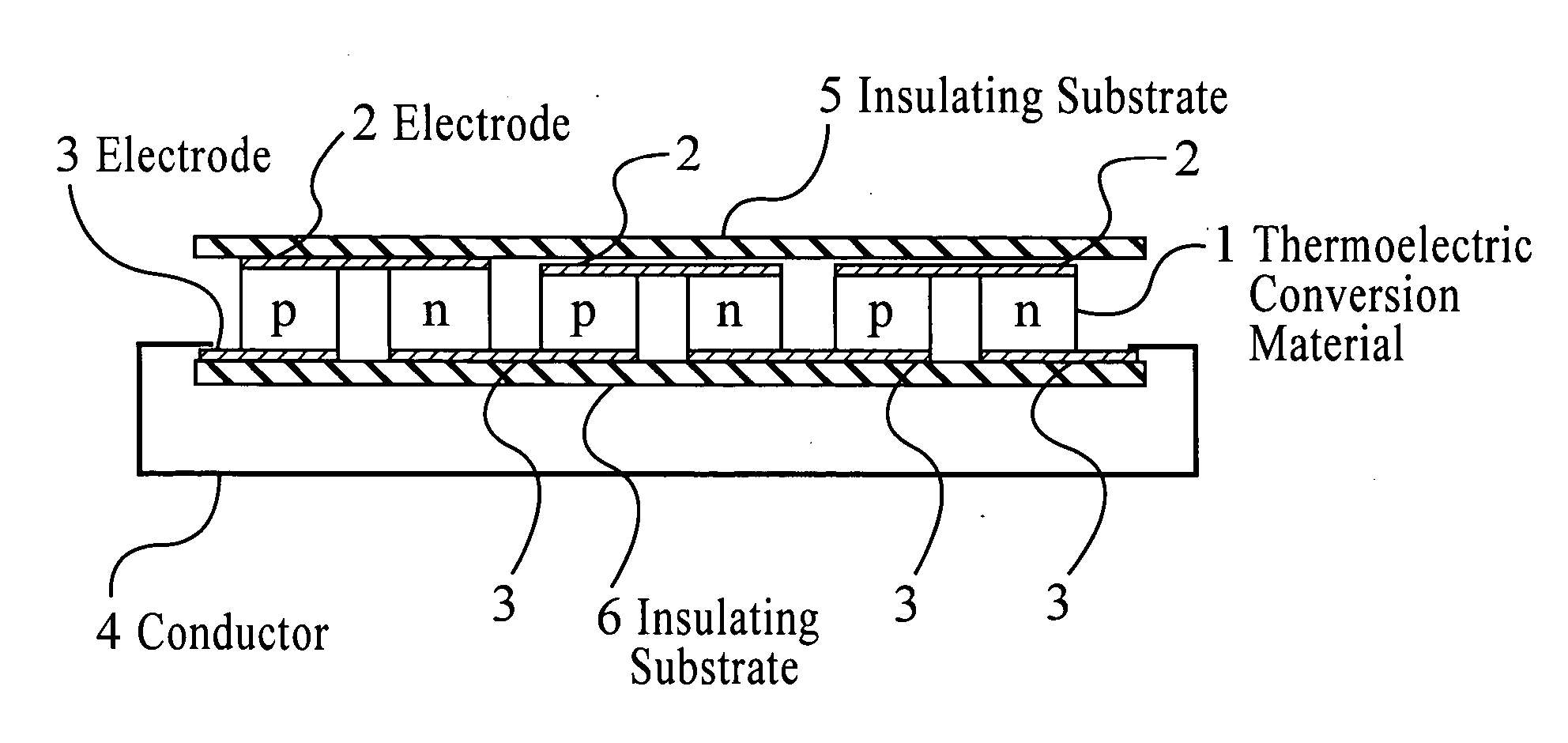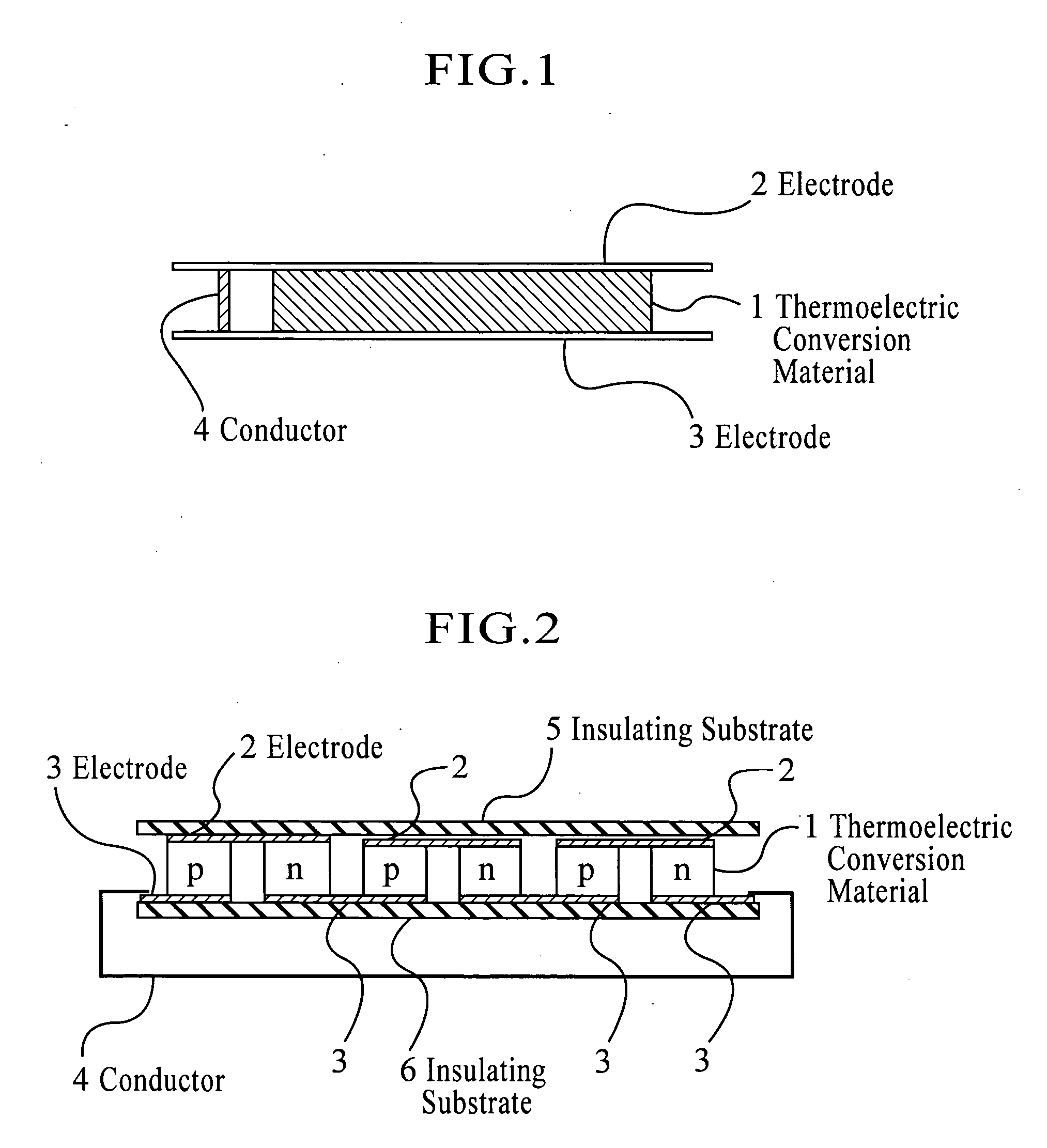Cooling device for electronic component using thermo-electric conversion material
- Summary
- Abstract
- Description
- Claims
- Application Information
AI Technical Summary
Benefits of technology
Problems solved by technology
Method used
Image
Examples
example 1
[0043] A radiation plate having the structure shown in FIG. 1 was produced by providing a BiTe-based p-type thermoelectric conversion material (4 mm long by 10 mm wide by 4 mm thick) between electrodes made of copper foil (40 μm thick) and soldering the surfaces of the thermoelectric conversion material and the copper foil.
[0044] A surface of the radiation plate was brought into contact with a surface of a planar heater, as a heat-generating device requiring cooling. A Peltier element was provided on the opposite surface of the radiation plate to cool the surface and increase the temperature difference between the high-temperature side and the low-temperature side.
[0045] While the Peltier element was supplied with current to cool the radiation plate, the heater was supplied with an AC voltage of 50 V. According to measurement with a chromel-alumel thermocouple, the temperature of the junction between the heater and the radiation plate was 62.5° C.
example 2
[0049] The BiTe-based p-type thermoelectric conversion material was replaced with a BiTe-based n-type thermoelectric conversion material. According to temperature measurement performed under the same conditions as in Example 1, the temperature in the case where the two electrodes, which functioned as a cathode and an anode, were changed from an open-circuit state to a short-circuit state was 66.5° C., and the temperature in the case where the electrodes were not short-circuited was 67.7° C. These results show a temperature drop of 1.2° C.
example 3
[0050] As a radiation plate having the structure shown in FIG. 2, PV2-S, manufactured by Eco 21, Inc., was used with its terminals short-circuited. A surface of the radiation plate was brought into contact with a surface of a planar heater, as a heat-generating device requiring cooling. No component was provided on the opposite surface of the radiation plate to cool it naturally by outside air. The heater was supplied with an AC voltage of 90 V. According to measurement with a chromel-alumel thermocouple, the temperature of the junction between the heater and the radiation plate was 99° C.
PUM
 Login to View More
Login to View More Abstract
Description
Claims
Application Information
 Login to View More
Login to View More - R&D
- Intellectual Property
- Life Sciences
- Materials
- Tech Scout
- Unparalleled Data Quality
- Higher Quality Content
- 60% Fewer Hallucinations
Browse by: Latest US Patents, China's latest patents, Technical Efficacy Thesaurus, Application Domain, Technology Topic, Popular Technical Reports.
© 2025 PatSnap. All rights reserved.Legal|Privacy policy|Modern Slavery Act Transparency Statement|Sitemap|About US| Contact US: help@patsnap.com


